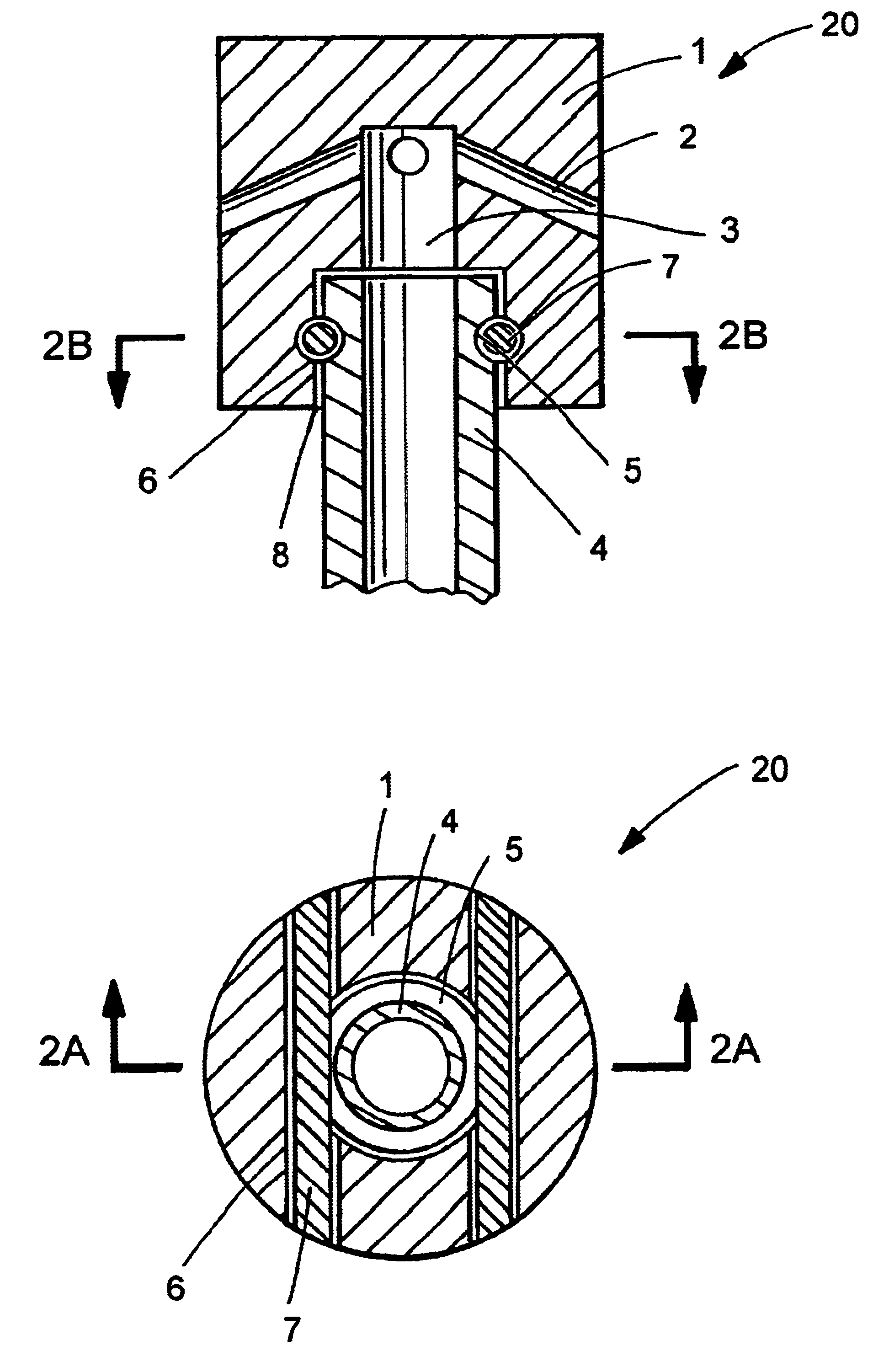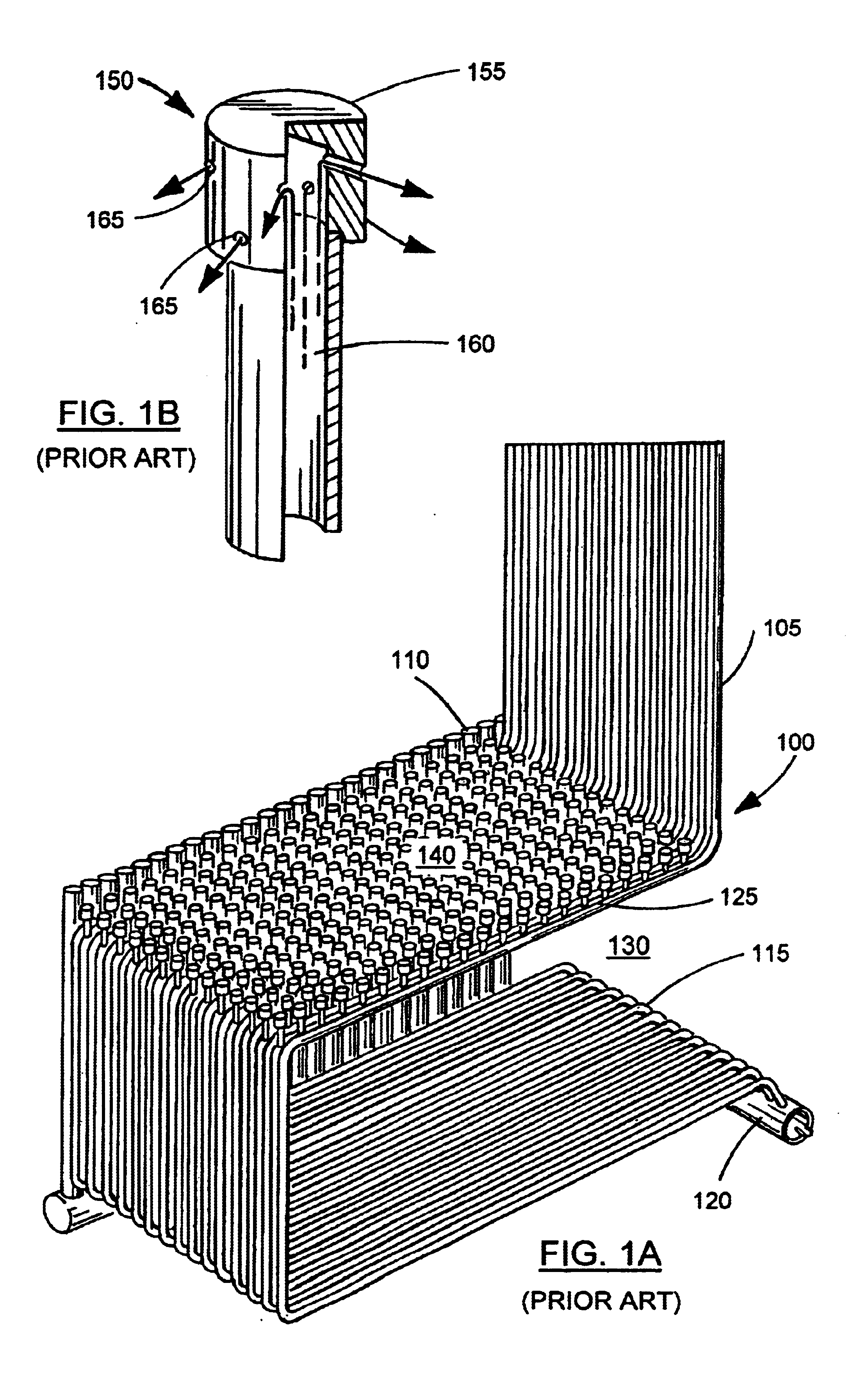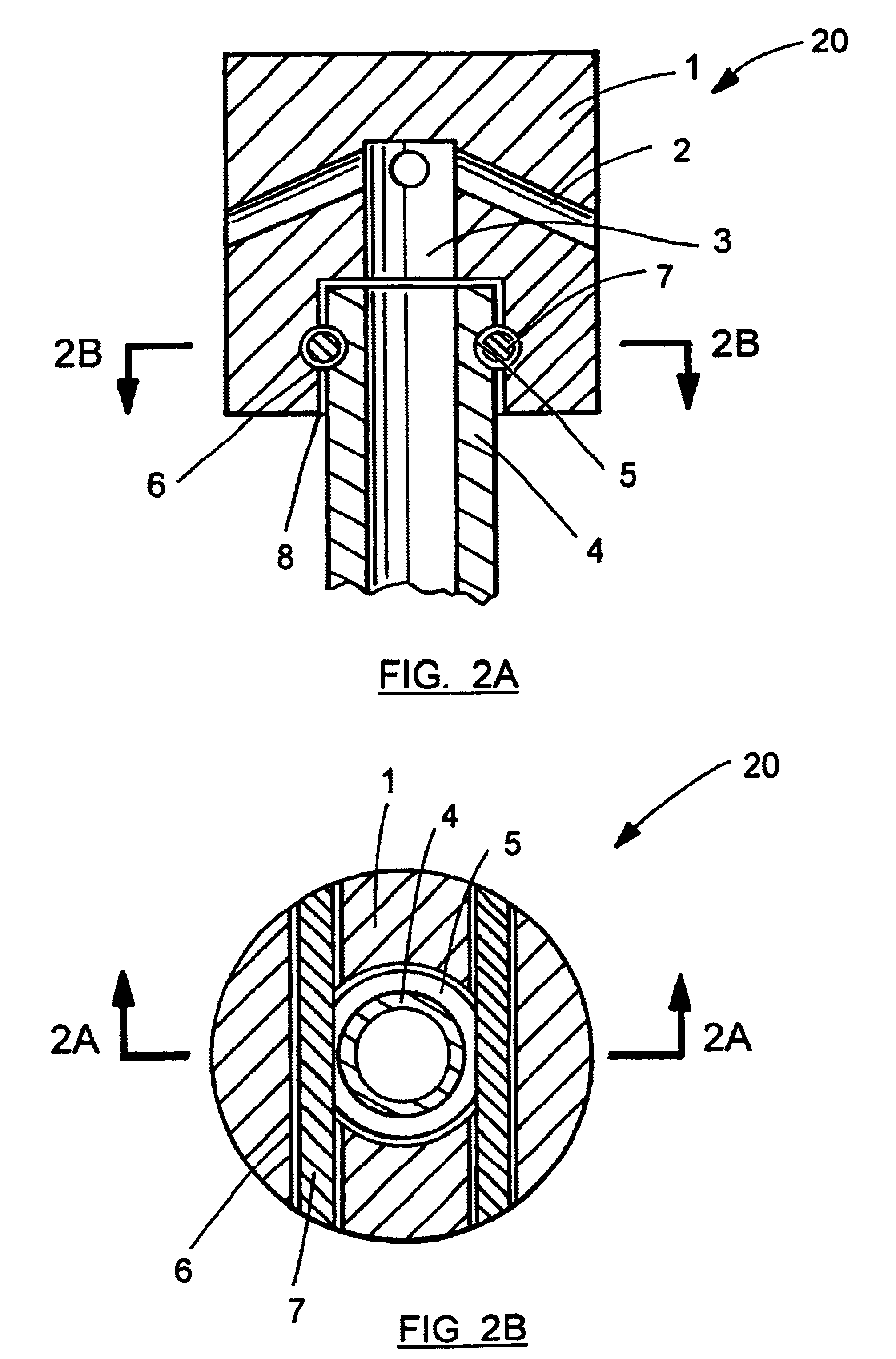Bubble cap assembly
a bubble cap and assembly technology, applied in the direction of combustion types, lighting and heating apparatus, furnaces, etc., can solve the problem that the bubble cap cannot be welded to the stainless steel stem, and achieve the effect of reducing the overall cost of capital plus maintenan
- Summary
- Abstract
- Description
- Claims
- Application Information
AI Technical Summary
Benefits of technology
Problems solved by technology
Method used
Image
Examples
Embodiment Construction
In the several drawings comprising the present disclosure, like reference numerals designate the same or functionally similar elements throughout the drawings. A preferred embodiment of the bubble cap assembly according to the present invention and generally designated 20, is shown in FIGS. 2A and 2B. The bubble cap assembly 20 is comprised of a ceramic bubble cap 1 which contains several outlet holes 2 connected through a central air passage 3 to a stainless steel stem 4. One end of the stem 4 is inserted into the bubble cap 1, while the other end (not shown) is connected to a source of fluidizing medium, such as air or other gaseous fluids. The end of the stem 4 which is inserted into the bubble cap 1 is provided with a circular groove 5 on its outer surface. In this embodiment, the bubble cap 1 has two insertion holes 6, their axes being substantially perpendicular to the axis of the stem 4, but this orientation is not critical to the practice of the invention. Each insertion hol...
PUM
 Login to View More
Login to View More Abstract
Description
Claims
Application Information
 Login to View More
Login to View More - R&D
- Intellectual Property
- Life Sciences
- Materials
- Tech Scout
- Unparalleled Data Quality
- Higher Quality Content
- 60% Fewer Hallucinations
Browse by: Latest US Patents, China's latest patents, Technical Efficacy Thesaurus, Application Domain, Technology Topic, Popular Technical Reports.
© 2025 PatSnap. All rights reserved.Legal|Privacy policy|Modern Slavery Act Transparency Statement|Sitemap|About US| Contact US: help@patsnap.com



